We spend one third of our life working, but 60% of people feel lonely at work and 1.2 million office workers suffer from chronic loneliness (chronic loneliness is a harmful as having 15 cigarettes a day!) The problem hurts happiness and productivity, costing employers between £2–3.7 billion every year (that’s in the UK alone!)
The Loneliness Lab
You may remember last summer we asked our followers to take part in online research on Loneliness at Work. The full report is being written up at the moment, but the early results were presented at Workplace Trends London last October by Rachel Edwards (Lendlease) and Nigel Oseland (Workplace Unlimited).
We don’t usually release our conference videos except to registered delegates, but we really wanted to share this trending topic.
If you enjoyed this presentation, take a look at our Workplace Trends Research Spring Summit, coming up on 25 March in London. Virtual and in-person tickets and more information is at https://workplacetrends.co/spring2020/
This is a guest post by our friends at Logovisual, who very kindly installed, hosted and curated our Futures Wall at Workplace Trends London earlier this month.
This year many of the speakers at the Workplace Trends London conference referenced the theme of making the workplace a human centric environment. Whether that’s through physical design; encouraging healthy and sustainable behaviours; engaging employees for change; or recognising the importance of mental as well as physical wellbeing, it all comes back to embracing the basic human trait of being a social animal.
Part of that is the desire and ability to communicate, and this year as a break from convention the conference embraced this by introducing an ‘ideas wall’
We were delighted to have the opportunity to run what we decided to call a Futures Wall. We invited delegates to post their insights about the future of the workplace, as a basis for a sense making exercise. This was a valuable way of gathering diverse intuitions of what the future holds, picking up “signals from the future” as a counter and complement to the more data and research-based format that the main conference provides. What emerged from the futures wall perhaps signals less of a trend, and more a rapid, dramatic change as a consequence of the present environmental, digital and political emergencies.
We invited people attending the conference to drop by and post their ideas about the future of work, in response to the question: what does the workplace look like in 2035?
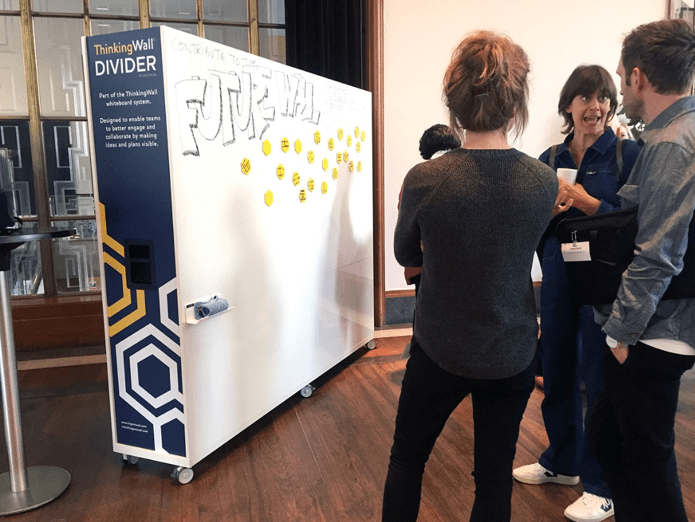
The idea of collecting input at the conference took some time to get going. Perhaps people were wary of being judged for their contributions. Or perhaps the idea of using magnetic rather than sticky notes on a whiteboard took a little getting used to. The wall certainly generated interest and discussion, and towards the end of the day some of these ideas had made it onto the wall itself. We might have to speak toSimone Leenders at WorkWire for some tips on nudging people into participating!
This was a real time look at what insights people have about their future, stimulated by being at the conference and hearing some lively presentations from people whose job it is to design for the future.
The output gives us intimations of what people want and expect. We could think of us all as being amplifiers of weak signals from the future.
The results are available to download as a pdf file if you’d like to see more detail.
Broadly though, we can see the response to current concerns around climate change, work life balance, remote working and technological change. If we string together the headings of the clusters to form a story, we can interpret it like this:
By 2035, as humanity finally responds to the shattering impact of climate change, our definition of work changes and new possibilities emerge.
Those changed expectations drive structural changes in corporations. As people exercise their freedom to make personal choices, the balance between real and virtual contacts shifts to make work more wholesome.
Workplaces embrace life-long needs and technology is serving people – not the other way around. As people increasingly work in networked co-creative groups, we begin to re-discover the joys of being human.
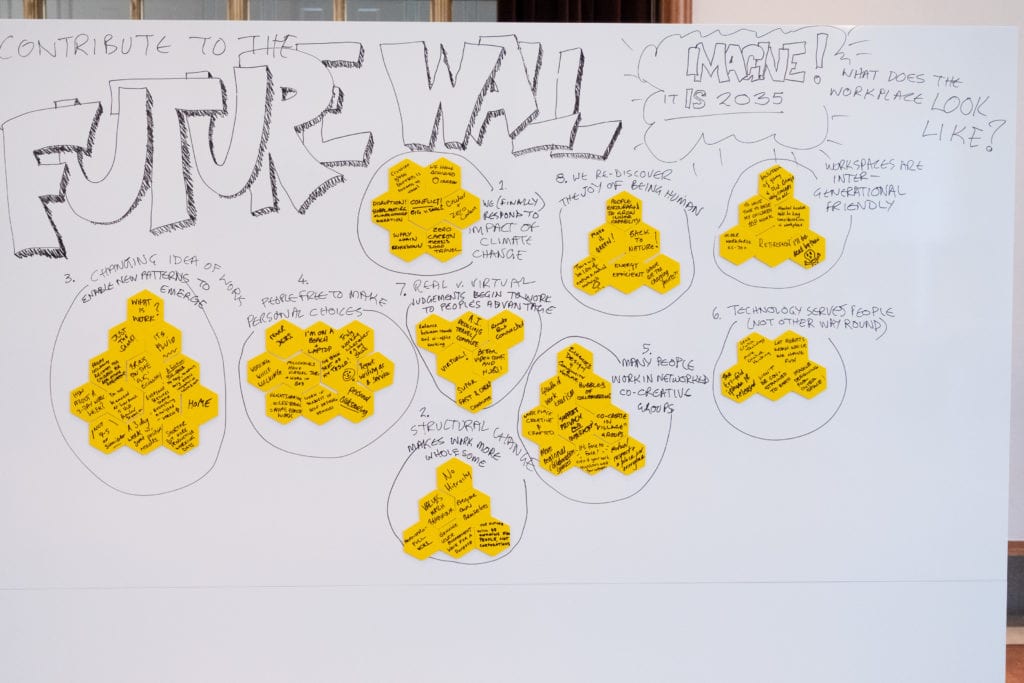
Our interpretation of the contributions is an optimistic one, to reflect the positive intentions of the conference. If seeing the results has sparked more ideas, just because the event is over doesn’t mean you can’t still add to the discussion.
You can download a free trial copy of the Logovisual Capture Software we used to recreate the Future Wall along with the data file. We’d be delighted if you have a go at adding more ideas and manipulating the clusters, or feel free to use this exercise as a basis for your own ideas session.
Logovisual are the creators of the ThinkingWall range of whiteboards for thinking, planning and collaboration. We used one of our ThinkingWall Dividers as the wall surface, a double sided magnetic whiteboard on wheels. The magnetic sticky notes are Magnotes, available in a range of shapes, sizes and colours. The methodology we used is called LogoVisual Thinking.
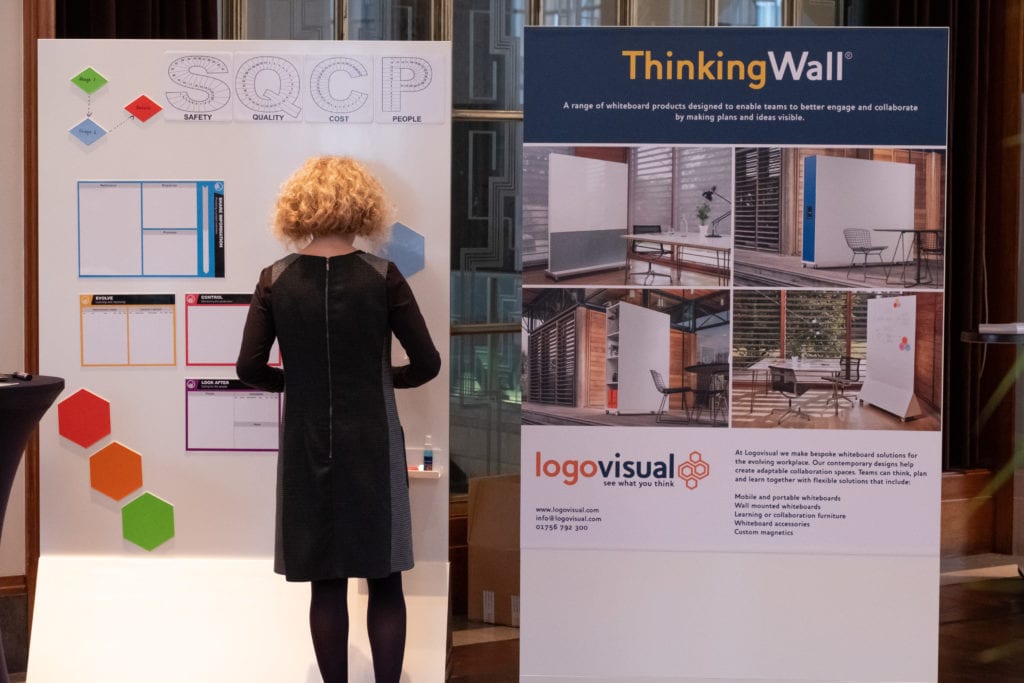
Branding specialist and Spacecraft Podcaster Dan Moscrop recently spent some time talking with workplace expert and psychologist Nigel Oseland. In the podcast they look at what people REALLY want at work; whether open plan is as rubbish as everyone says it is; how to use data to prove design works; and touch on Nigel’s current research projects with Lendlease and Herman Miller.
Towards the end of the podcast Dan and Nigel also kindly give a mention to our Workplace Trends: Towards a new era of work and workplace conference in London on 15 October. They’ll both be attending on the day and would love to pick up the conversation with you there!
Here’s the full podcast, and to hear more from Dan and his other Spacecraft Podcast sessions, subscribe to the feed here.
At our recent Design and Management of Learning Environments conference, Ian Stickland of Charcoalblue spoke about his work designing and installing auditoriums, not just in learning environments and theatres, but also in workplaces.
Whilst he covered the effects of the digital age in both the design and use of lecture theatres and presentation spaces, even more interestingly he dwelt too on the why and how of designing spaces that enhance the relationship between the presenter and their audience. So once again the importance of engagement was highlighted as a driving and necessary force in the design of a productive space.
The session also drew on the rich history of theatre, teaching and storytelling spaces to explain the fundamentals of auditorium design.
We don’t usually release our conference videos except to our delegates, but just on this occasion we really wanted to share this with you!
Filmed and edited by our friends at McLeod Audio Visual.
Mike Kelly, Library Space Development Manager at The University of Manchester Library, attended our Design & Management of Learning Environments Conference in London and subsequently published this blog post on the event.
Here’s the first few paragraphs: read the post in full on the University’s Library Services Blog.
“I recently attended the Design and Management of Learning Environments conference, organised by Workplace Trends and sponsored by Herman Miller. After a great journey to Euston Station, made better by a strong coffee and the latest edition of Facilitate Magazine, I was excited to start the day.
I am very familiar with this area of London (Kings Cross, Great Portland Street, Regents Park) but I am always energised by the noise and movement in this vibrant part of the City. As I walked alongside Regents Park, I noticed that the long line of queuing traffic was silent – as if the vehicles were parked. However, on closer inspection, I found that every car was either electric or hybrid (including Teslas, Porches, BMWs). The effect on the surrounding atmosphere was incredible – calm, a feeling of safety and quiet. I presume this move to more electric vehicles in London is being driven by the Low Emission Zone. I wonder when this will roll out across Manchester? From what I experienced in London, I am a staunch supporter.
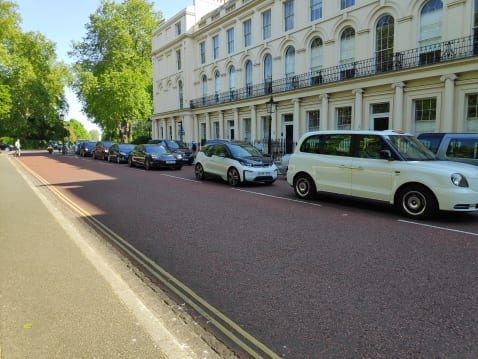
The venue for the conference had been changed from the British Library to The Royal College of Physicians. I had no idea what to expect and looked forward to see the building for the first time. It didn’t disappoint. After walking past the beautiful town houses that overlooked Regents Park, I was immediately ‘disrupted’ by an imposing “modernist masterpiece and one of London’s most important post-war buildings”. Wow – this piece of stark architecture, a grade 1 listed building, had been designed by Sir Denys Lasdun to make a statement. I knew it was to be a good day.”
Read more …
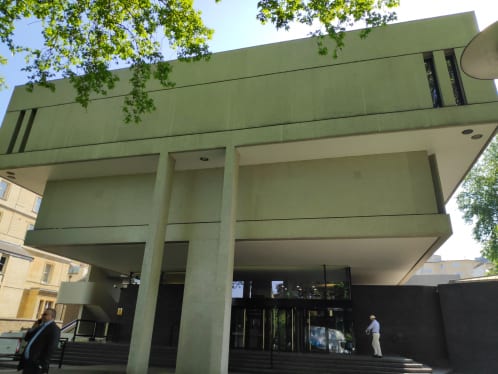
Read the full ‘Drive Change and Innovate’ post on the Library Services Blog here.
We’re blogging the day’s action from our Learning Environments Conference live, here, on Thursday 16 May 2019!
(If you have trouble viewing the page below please try this link.)
Vanessa Champion from exhibitors Argenta Wellness very kindly brought her camera along to our Spring Summit in London on 21 March.
Here are just a few of the shots: a fantastic record of an excellent day. Thank you everyone who participated!
Be part of our next London event! Registration is now open for our autumn Workplace Trends London conference.
Here’s the live blog record from our research-focused Spring Summit 2019.
(If you have trouble viewing the page below please try this link.)
Our conference messages spread far and wide. Early indications are that #wtrends19 tweets reached over 230,000 people and were presented on Twitter 4.5 million times! We’ll report back the final figures here as soon as we have them.
If you enjoy the action on this live blog, consider attending our Workplace Trends London conference this October. A small number of super-early bird tickets are currently available, expected to sell out very soon!
Nigel Oseland, Workplace Unlimited, and Colin Campbell, Saint-Gobain Ecophon, speaking at the Design & Management of Learning Environments 2018, on the early findings of their literature review on classroom noise and teacher personality.
[youtube https://www.youtube.com/watch?v=Xds2mq9EKMM&w=560&h=315]
Despite resistance to open plan classrooms in the UK, the movement towards innovative learning environments continues in parts of Europe, especially Scandinavia, Australia and New Zealand. Their definition (ILEs) is an ongoing discussion in itself and their success is dependent on many aspects. However, understanding the changes in pedagogic approaches, including aspects like the profile of teachers in this context and the quality of the acoustic design are key to informing the design process in order to deliver successful and sustainable learning outcomes.